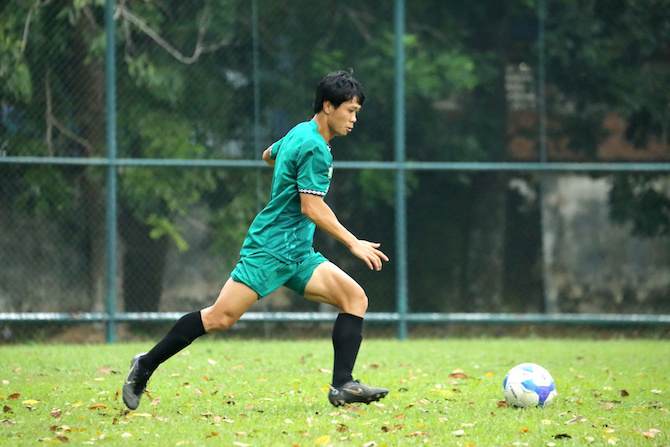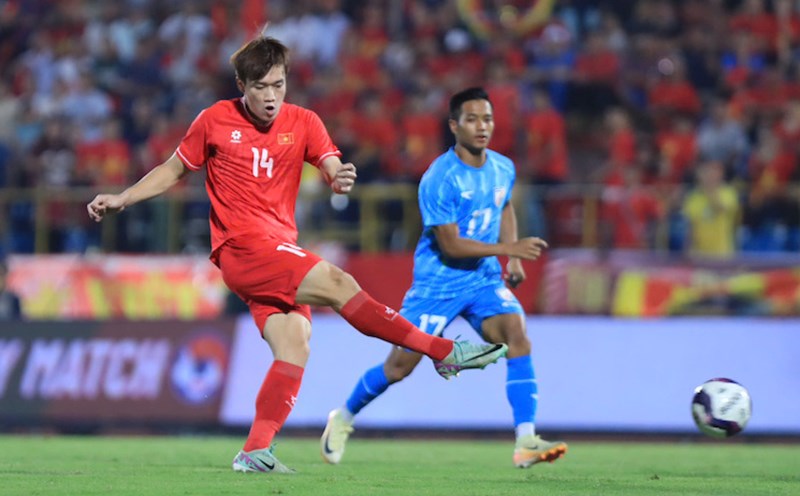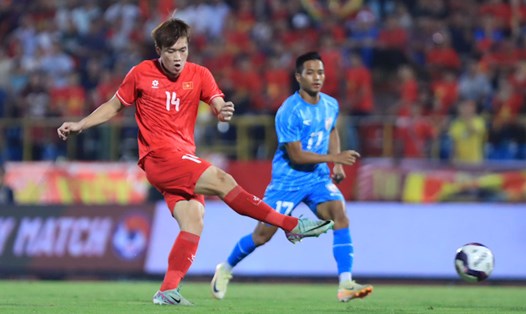Non-conformist
We don't have to wait until Hoang Duc, Van Lam and a series of V.League players are relegated to the First Division for fans to see the humor in the transfer story of Vietnamese football.
It must be emphasized that buying and selling is just a phrase... used for fun. Because, in V.League in particular and Vietnamese football in general, transfer fees are a luxury, rarely appearing clearly and professionally.
Not to mention, in the case of Hoang Duc leaving The Cong Viettel 3 months before the contract, many sources revealed that Phu Dong Ninh Binh only worked directly with him, instead of having a 3-party dialogue like the standard foreign transfer model.
Even when there is a bilateral dialogue, that is, between clubs, interested teams rarely pay large transfer fees.

Hanoi FC once wanted to sign Lam Ti Phong from Thanh Hoa, but when they learned that the contract was still long and the release fee was up to tens of billions of VND, the capital team had to withdraw. Such deals happen like "daily bread" in the V.League or First Division.
Many clubs are not in the habit of paying transfer fees to rival teams. They want players on free transfers. But the funny thing is, the club still has to pay from several billion to tens of billions of dong in signing-on fees, or even a commission of several thousand dollars to the broker to complete a transfer deal.
Signing fees are skyrocketing. Player values are therefore inflated compared to reality.
It is also worth mentioning another story in Vietnam, that is, the coach does not necessarily play the role of the person who decides on a purchase. Or like recruiting foreign players, most teams choose players through video or sweet words from brokers.
Recently, coach Le Duc Tuan of Hanoi FC had to exclaim about one of their foreign players: "He doesn't play as well as he does on video."
Currently, not only Hanoi, many football teams only trust the agent's connections, through videos. To be more careful, the team will try out foreign players with short-term contracts to avoid trouble if they are terminated to avoid "losing money and getting sick".
First blame yourself…
Back to the news stories of the past few days, Van Lam and Hoang Duc's move down to the First Division has caused controversy.
The moment Dang Van Lam hesitated, said a few words and then asked permission to refuse to answer the question "Why did you go down to the First Division to play football?". He did not have enough courage to say the reason for going down from V.League to the First Division.
Meanwhile, Quoc Viet - the young face of Hoang Anh Gia Lai also answered hesitantly.
More than a month ago, Van Lam moved to the Ho Chi Minh City Youth Club, put on his shirt and went out to practice. But a month later, he signed a contract with Phu Dong Ninh Binh on the team's departure day.
It seems that Hoang Duc is the more well-prepared player. He admitted that he was relegated to the First Division because "everyone needs good finances to take care of their family".
Hoang Duc's story points out a reality related to Vietnam's youth training contracts. That is, "tying down" young talents for too long in many football teams.

The generation of Cong Phuong, Tuan Anh, Xuan Truong… had to sign youth contracts with Hoang Anh Gia Lai until they were 28 years old. And many other clubs also keep young players until they are 25, 26 years old.
Looking at world football, many "football prodigies" are transferred when they are only 18 years old. That is an opportunity for them to get rich, to choose their own next steps in their career. But in Vietnam, players can only make their own decisions when they are 25-28 years old.
With Van Lam's story, many people think about the current situation of Binh Dinh club. 3 years ago, this team was likened to the PSG of Vietnam. But after 3 years, when there was no longer strong investment, Binh Dinh witnessed the departure of a series of names, and Van Lam was one of them.
The fact that Vietnamese clubs keep "eating" in a 3-5 year cycle like that, and the fact that players accept leaving to find new destinations for a living, is understandable.
The funny story of Vietnamese football probably does not stop at the stars suddenly being relegated to the First Division. Because behind that, the unresolved problems of the football industry are the "hidden iceberg".
If we continue to maintain the outdated transfer method that has existed for the past 20 years, I'm afraid Vietnamese football will still have a lot of funny stories.











